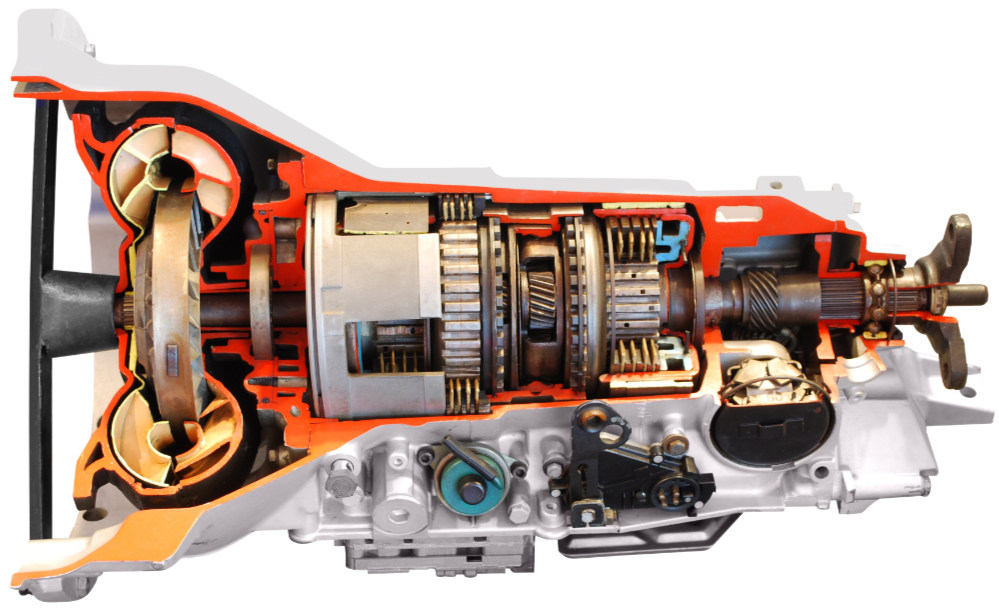
MY VAN has 340,000 miles on it, so, among other things, I check fluids regularly. Yesterday I noticed the transmission fluid was a little low, and it was slightly brown instead of pink. I had never had the fluid flushed and replaced in the 225k miles I’ve owned the van. It seemed like a good time to have it serviced.
As I was waiting I thought, hey it would be a good idea to do an article on automatic transmissions. So I asked the All-knowing Artificial Intelligence robot about it.
CARING FOR AN AUTOMATIC TRANSMISSION involves several steps to help ensure the longevity and proper function of your vehicle’s transmission. Here are some tips on how to care for an automatic transmission:
Regular Maintenance: Regular maintenance is essential to keep your automatic transmission running smoothly. This includes regular oil changes, fluid checks, and flushes. Your vehicle’s owner’s manual will provide recommended service intervals for these tasks.
Use the Right Fluid: Always use the type of transmission fluid recommended by the manufacturer. Using the wrong type of fluid can cause damage to your transmission.
Check Fluid Levels Regularly: Check your transmission fluid levels regularly to ensure they are within the recommended range. Low fluid levels can cause your transmission to overheat and wear out faster.
Avoid Overheating: Overheating can cause damage to your transmission. Avoid putting excessive strain on your transmission by avoiding hard acceleration, towing more than your vehicle’s recommended capacity, or driving in heavy stop-and-go traffic in hot weather.
Use the Parking Brake: Always use the parking brake when parking your vehicle. This takes the strain off the transmission and helps prevent damage from the vehicle rolling.
Shift Gently: Avoid shifting from reverse to drive or vice versa without coming to a complete stop. This can put unnecessary strain on your transmission and cause damage over time.
Get Problems Checked Out: If you notice any unusual noises or issues with your transmission, get it checked out by a professional mechanic. Delaying repairs can lead to further damage and more expensive repairs in the future.
By following these tips, you can help ensure that your automatic transmission runs smoothly and lasts as long as possible.

THERE ARE SEVERAL SIGNS that your automatic transmission may be going bad. Here are some common symptoms to look out for:
Slipping Gears: If your transmission is slipping, you may feel that your engine is revving higher than usual while your vehicle struggles to accelerate or maintain speed. This can be caused by low transmission fluid levels, a worn-out clutch or band, or a damaged torque converter.
Rough Shifting: A damaged transmission can cause the gears to shift roughly or jerkily, especially when shifting from one gear to another. This can be caused by worn out gears, a faulty solenoid, or low transmission fluid levels.
Delayed Engagement: Delayed engagement is when your vehicle takes a few seconds to move after you put it in gear. This can be a sign of a worn-out clutch, torque converter, or transmission pump.
Unusual Noises: Unusual noises, such as grinding or whining, can be a sign that your transmission is going bad. These noises may occur when shifting gears, accelerating, or decelerating.
Transmission Fluid Leaks: If you notice that your transmission fluid is leaking or that you have to add fluid frequently, this could be a sign of a damaged transmission.
Burning Smell: A burning smell coming from your vehicle’s transmission can be a sign of overheating or damage. Overheating can be caused by low fluid levels or a damaged cooler.
If you experience any of these symptoms, it is important to have your vehicle checked by a professional mechanic to determine the cause of the problem and make necessary repairs. Delaying repairs can lead to further damage and more expensive repairs in the future.

HOW TO PROLONG THE LIFE of your automatic transmission:
Regular maintenance: The most important thing you can do to prolong the life of your automatic transmission is to keep up with regular maintenance. This includes regular fluid changes, checking fluid levels, and keeping the transmission cool. Following the manufacturer’s recommended maintenance schedule is crucial to keep your transmission in good condition.
Avoid excessive idling: Extended idling can cause unnecessary wear and tear on the transmission. When the vehicle is idling, the transmission is still engaged, which can cause the transmission fluid to break down and reduce its effectiveness.
Use the right fluid: Use the transmission fluid recommended by the manufacturer. Using the wrong type of fluid can cause damage to the transmission over time. If you are unsure which fluid to use, consult your owner’s manual or a certified mechanic.
Avoid excessive heat: High temperatures can cause the transmission fluid to break down, which can lead to damage to the transmission. To avoid excessive heat, make sure the transmission is properly cooled and avoid towing heavy loads or driving in extreme conditions.
Avoid sudden acceleration: Sudden acceleration can cause stress on the transmission and cause it to wear down faster. Accelerate gradually and avoid heavy loads to help prolong the life of your transmission.
Don’t tow in overdrive: Towing in overdrive can cause unnecessary stress on the transmission. To avoid damaging the transmission, use the appropriate gear for the load and terrain.
By following these tips and taking care of your transmission, you can help prolong its life and avoid costly repairs down the road.

Helpful info, thanks!
All the things my dad taught me in the 70s when I got my first car.
A good dad. Mine taught me nothing then blamed me when something broke.
There are many stories about high-mileage vehicles that had not seen regular fluid changes developing troubles not long after the flush. 340k is amazing for an original trans.